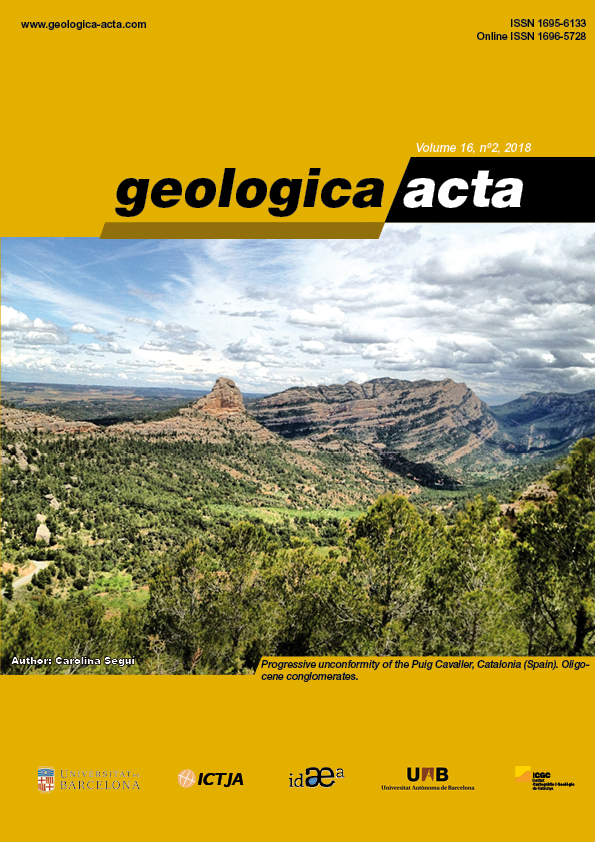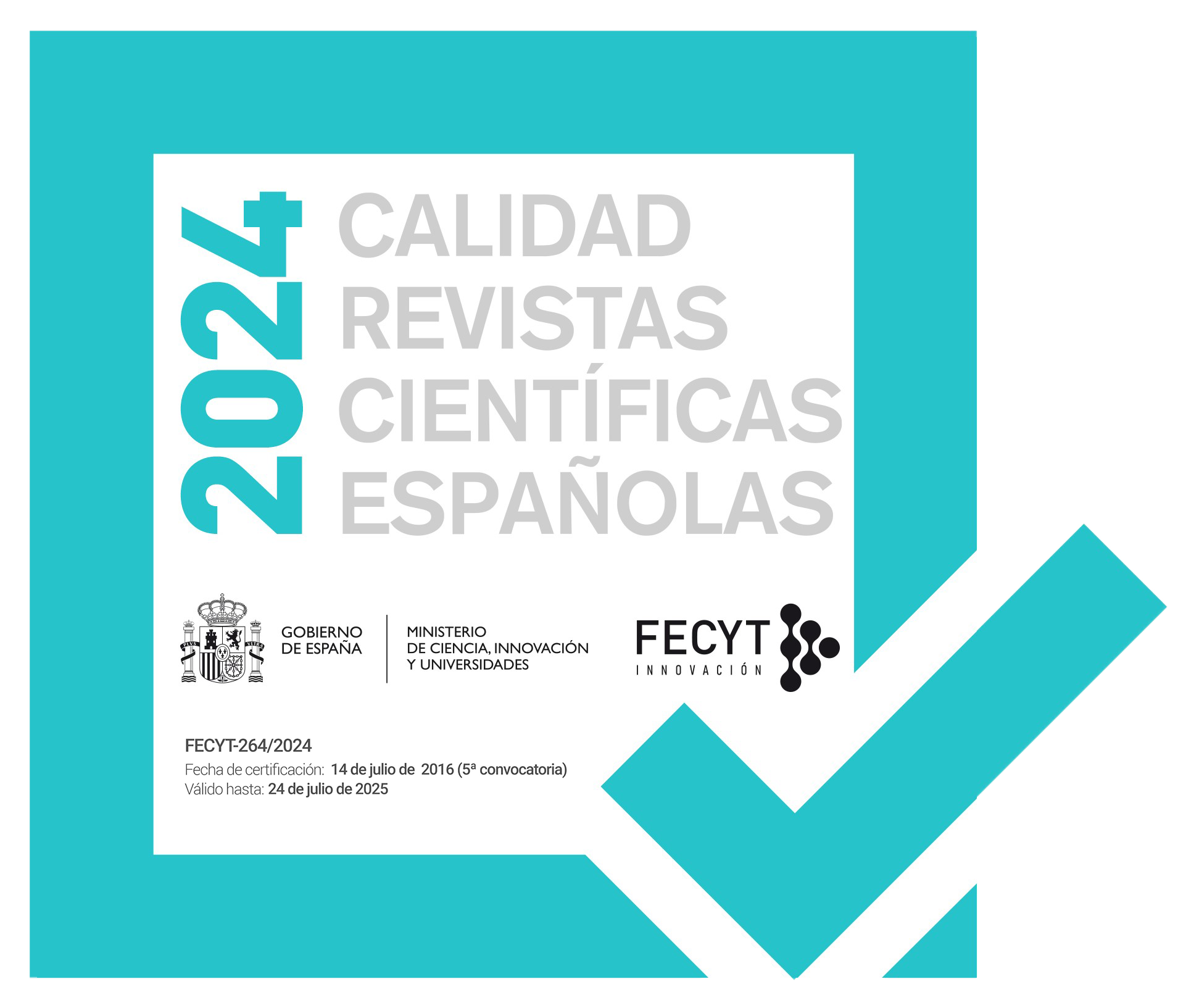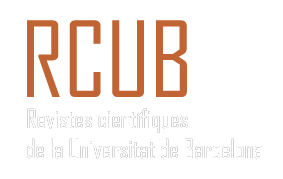C and O stable isotopes and rare earth elements in the Devonian carbonate host rock of the Pivehzhan iron deposit, NE Iran
DOI:
https://doi.org/10.1344/GeologicaActa2018.16.2.2Keywords:
REE geochemistry, Carbonate host rocks, C and O stable isotopes, Pivehzhan, IronAbstract
The Pivehzhan iron deposit is located at about 80km southwest of Mashhad, NE Iran. They occur within the Devonian carbonates as lenticular and massive bodies, as well as veinlets of magnetite and iron sulphides, transformed to goethite and haematite by weathering process. The hydrothermal calcite is the most important gangue mineral, which is observed in the form of veins/veinlets and open-space filling. The iron ores are accompanied by some minor elements such as Mn, Ti, Cr, and V and negligible amounts of Co and Ni. The distribution pattern of Rare Earth Elements (REEs) normalized to Post Archean Australian Shale (PAAS), which is characterized by the upward convex, as well as the positive Eu anomalies indicate the activity of reduced and acidic hydrothermal fluids. The negative Ce anomalies of host carbonates, although slight, point to the dominance of anoxic conditions during interaction with hydrothermal fluids.
The hydrothermal calcite and quartz coexisting with the iron minerals contain principally fluid, which were homogenized into liquid phase. The homogenization temperature (TH(L-V)) and the salinity of the analysed fluid inclusions range from 129°C to 270°C and from 0.4wt.% to 9.41wt.% NaCl eq., respectively. The δ13CPDB and δ18OSMOW values ranges from -2.15‰ to -5.77‰ (PeeDee Belemnite standard, PDB) and from +19.87‰ to +21.64‰ (Standard Mean Ocean Water standard, SMOW) in hydrothermal calcite veinlets occurring with iron minerals and -0.66‰ to -4.37‰ (PDB) and +15.55‰ to +20.14‰ (SMOW) within the host carbonates, respectively.
The field relations and petrographic examination along with geochemical and isotopic considerations indicate that the Pivehzhan iron deposit was formed through replacement processes by reducing and acid fluids containing light carbon and oxygen isotopes. Variations in the physico-chemical conditions of hydrothermal fluids and their interaction with carbonates were the most effective mechanisms in the formation of this iron deposit. The potential source of iron was probably the basement magmatic rocks from which iron was leached by hydrothermal solutions.
References
Alavi, M., 1992. Thrust tectonics of the Binalood region, NE Iran. Tectonics, 11, 360-70.
Allwood, A.C., Kamber, B.S., Walter, M.R., Burch, I.W., Kanik, I., 2010. Trace elements record depositional history of an Early Archean strom a tolitic carbonate platform. Chemical Geology, 270, 148-163.
Armstrong-Altrin, J.S., Verma, S.P., Madhavaraju, J., Lee, Y.I., Ramasamy, S., 2003, Geochemistry of Late Miocene Kudankulam Limestones, South India. International Geology Review, 45, 16-26.
Arnold, R.G., 1969. Pyrrhotite Phase relations below 304+-6ºC at <11atm total pressure. Economic Geology, 64, 405-419.
Bakker, R.J., 2013. Software Package Fluids, version 2, Fluid inclusion laboratory Leoben. [Available at: http://fluids.unileoben.ac.at/Computer.html]
Banner, J.L., Hanson, G.N., Meyers, W.J., 1988. Rare earth element and Nd isotopic variations in regionally extensive dolomites from the Burlington-Keokuk Formation Mississippian: implications for REE mobility during carbonate diagenesis. Journal of Sediment and Petrology, 58, 415-432.
Barnes, H.L. (ed.), 1997. Geochemistry of hydrothermal ore deposit, 2nd edition. New York, John Wiley & Sons Inc., 972pp.
Bau, M., 1991. Rare-earth element mobility during hydrothermal and metamorphic fluid-rock interaction and the significance of the oxidation state of europium. Chemical Geology, 93, 219-230.
Bau, M., 1996. Controls on the fractionation of isovalent trace elements in magmatic and aqueous systems: evidence from
Y/Ho, Zr/Hf, and lanthanide tetrad effect. Contribution. Mineralogy and Petrology, 123, 323-333.
Bau, M., Möller, P., 1992. Rare earth element fractionation in metamorphogenic hydrothermal calcite, magnesite and siderite. Mineralogy and Petrology, 45, 231-246.
Bau, M., Dulski, P., 1996. Distribution of yttrium and rareearth elements in the Penge and Kuruman iron-formations, Transvaal Supergroup, South Africa. Precambrian Research, 79, 37-55.
Bau, M., Koschinsky, A., 2009. Oxidative scavenging of cerium on hydrous Fe oxide: evidence from the distribution of rare earth elements and yttrium between Fe oxides and Mn oxides in hydrogenetic ferromanganese crusts. Geochemical Journal, 43, 37-47.
Bau, M., Koschinsky, A., Dulski, P., Hein, J.R., 1996. Comparison of the partitioning behaviours of yittrium, rare earth elements, and titanium between hydrogenetic marine ferromanganese crusts and seawater. Geochimica et Cosmochimica Acta, 60, 1709-1725.
Bertram, C., Elderfield, H., 1993. The geochemical balance of the rare earth elements and neodymium isotopes in the oceans. Geochimica et Cosmochimica Acta, 57, 1957-1986.
Cantrell, K.J., Byrne, R.H., 1987. Rare earth element complexation by carbonate and oxalate ions. Geochimica et Cosmochimcal Acta, 51, 597-60.
Chen, D., Qing, H., Yan, X., Li, H., 2006. Hydrothermal venting and basin evolution Devonian, South China: Constraints from rare earth element geochemistry of chert. Sedimentary Geology, 183, 203-216.
Craig, H., 1957. Isotopic standards and isotopic correction factors for mass spectrometric analysis of carbon dioxide. Geochimica Cosmochimica Acta, 12, 133-149.
Dare, A.-S., Barnes, S.-J., Beaudoin, G., Méric, J., Boutroy, E., Potvin-Doucet, C., 2014. Trace elements in magnetite as petrogenetic indicators. Mineralium Deposita, 49, 785-796.
Davoudzadeh, M., Aghanabati, M., Shahrabi, M., 1975. An orogenic phase of mid-Jurassic age in northeast Iran Binalood Mountain rang. Neues Jahrbuch für Geologie und Mineralogie Abhandlungen, 162, 137-163.
Elderfield, H., Greaves, M.J., 1982. The rare earth elements in seawater, Nature, 296, 214-219.
Feng, D., Chen, D., Peckmann, J., 2009. Rare earth elements in seep carbonates as tracers of variable redox conditions at ancient hydrocarbon seeps. Terra Nova, 21, 49-56.
Fernández-Nieto, C., Torres-Ruiz, J., Pérez, I.S., González, I.F., López, J.G., 2003. Genesis of Mg-Fe carbonates from the Sierra Menera magnesite-siderite deposits, Northeast Spain: Evidence from Fluid inclusions, Trace elements, rare earth elements, and stable isotope data. Economic Geology, 98, 1413-1426.
Franchi, F., Hofmann, A., Cavalazzi, B., Wilson, A., Barbieri, R., 2015. Differentiating marine vs hydrothermal processes in Devonian carbonate mounds using rare earth elements Kess Kess mounds, Anti-Atlas, Morocco. Chemical Geology, 409, 69-86.
Ghorbani, M., 2013. The economic geology of Iran: mineral deposits and natural resources. New York, Springer Dordrecht Heidelberg, 581pp.
Greaves, M., Elderfield, H., Sholkovitz, E., 1999. Aeolian sources of rare earth elements to the Western Pacific Ocean. Marine Chemistry, 68, 31-38.
Haas, J.R., Shock, E.L., Sassani, D.C., 1995. Rare earth elements in hydrothermal systems: estimates of standard partial modal thermodynamic properties of aqueous complexes of the rare earth elements at high pressures and temperatures. Geochimica et Cosmochimica Acta, 59, 4329-4350.
Hecht, L., Freiberger, R., Gilg, H.A., Grundmann, G., Kostitsyn, Y.A., 1999. Rare earth element and isotope C, O, Sr characteristics of hydrothermal carbonates: genetic implications for dolomite-hosted talc mineralization at Göpfersgrün Fichtelgebirge, Germany. Chemical Geology, 155, 115-130.
Hemley, J., Hunt, J., 1992. Hydrothermal ore-forming processes in the light of studies in rock-buffered systems II, Some general geologic applications. Economic Geology, 87, 23-43.
Holzer, H.F., Moemen Zadeh, H., 1969. Report on reconnaissance of granite margins in the Mashhad area, Khorasan province, northeastern Iran. Tehran, Geological survey of Iran, 41pp. [Internal Report]
Hu, Y., Feng, D., Peckmann, J., Roberts, H.H., Chen, D., 2014. New insights into cerium anomalies and mechanisms of trace metal enrichment in authigenic carbonate from hydrocarbon seeps. Chemical Geology, 381, 55-66.
Jiang, S.Y., Zhao, H.X., Chen, Y.Q., Yang, T., Yang, J.H., Ling, H.F., 2007. Trace and rare earth element geochemistry of phosphate nodules from the lower Cambrian black shale sequence in the Mufu Mountain of Nanjing, Jiangsu province, China. Chemical Geology, 244, 584-604.
Kamber, B.S., Webb, G.E., 2001. The geochemistry of Late Archaean microbial carbonate: implications for ocean chemistry and continental erosion history. Geochimica et Cosmochimica Acta, 65, 2509-2525.
Kamber, B.S., Bolhar, R., Webb, G.E., 2004. Geochemistry of late Archaean stromatolites from Zimbabwe: evidence for microbial life in restricted epicontinental seas. Precambrian Research, 132, 379-399.
Keith, M., Weber, J.N., 1964. Carbon and oxygen isotopic composition of selected limestones and fossils. Geochimica et Cosmochimica Acta, 28, 1787-1816.
Kim, J.H., Torres, M.E., Haley, B.A., Kastner, M., Pohlman, J.W., Riedel, M., Lee, Y.-J., 2012. The effect of diagenesis and fluid migration on rare earth element distribution in pore fluids of the northern Cascadia accretionary margin. Chemical Geology, 291, 152-165.
Lammerer, B., Langheinrich, G., Manutchehr Danai, M., 1983. The tectonic evolution of the Binaloud NE-Iran, Geodynamic project Geotraverse in Iran, in geodynamic project in Iran, Geological Survey of Iran, Tehran, 51, 91-102. [Final report]
Langheinrich, G., Lammerer, B., 1979. Structural section through the Binaloud –Mountains- a preliminary report. Arbeitsbericht zum Forschungsvorhaben La, 212, 4, 17pp.
Liu, Y.G., Miah, M.R.U., Schmitt, R.A., 1988. Cerium: a chemical tracer for paleo-oceanic redox conditions. Geochimica et Cosmochimica Acta, 52, 1361-1371.
Madhavaraju, J., Ramasamy, S., 1999. Rare earth elements in limestones of Kallankurichchi Formation of Ariyalur Group, Tiruchirapalli Cretaceous, Tamil Nadu. Journal of the Geological Society of India, 54, 291-301.
Madhavaraju, J., Lee, Y.I., 2009. Geochemistry of the Dalmiapuram Formation of the Uttatur Group Early Cretaceous, Cauvery basin, southeastern India: Implications on provenance and paleo-redox conditions. Revista Mexicana de Ciencias Geológicas, 26, 380-394.
Madhavaraju, J., González-León, C.M., Lee, Y.I., ArmstrongAltrin, J.S., Reyes-Campero, L.M., 2010. Geochemistry of the Mural Formation Aptian-Albian of the Bisbee Group, Northern Sonora, Mexico. Cretaceous Research, 31, 400-414.
McLennan, S.M., 1989. Rare earth elements in sedimentary rocks influence of provenance and sedimentary processes. Reviews in Mineralogy and Geochemistry, 21, 169-200.
Migdisov, A., Williams-Jones, A., Brugger, J., Caporuscio, F., 2016. Hydrothermal transport, deposition, and fractionation of
the REE: Experimental data and thermodynamic calculations. Chemical Geology, 439, 13-42.
Mitchell, P.A., Proffett, J.M., Dilles, J.H., 1998. Geological review of the Batu Hijau porphyry copper-gold deposit, Sumbawa Island, Indonesia. Newmont Nusa Tenggara Company, 164pp. [Final report] [Unpublished]
Nabavi, M., 1976. An introduction to the geology of Iran. Tehran, Geological survey of Iran, 109pp. [In Persian]
Nadoll, P., Angerer, T., Mauk, J.L., French, D., Walshe, J., 2014. The chemistry of hydrothermal magnetite: a review. Ore Geology Reviews, 61, 1-32.
Najafzadeh Tehrani, P., Calagari, A., Abedini, A., Mazlumi, A., 2013. Geological, mineralogical, alteration features, rare earth elemnts REE geochemistry of Neyzar Iron deposit, Southwest of Mashhad, Northeast Iran. Iranian Society of Crystallography and Mineralogy, 21, 229-242. [In Persian with English abstract]
Najafzadeh Tehrani, P., Calagari, A.A., Velasco Roldan, F., Simmonds, V., Siahcheshm, K., 2016a. Mineralogy and mineral chemistry of Pivehzhan iron deposit in northeast of Iran. 34th National and 2nd Internatinal Geoscience Congress of Geological Survey of Iran, Tehran. [In Persian with English abstract]
Najafzadeh Tehrani, P., Calagari, A.A., Velasco, F., Simmonds, V., Siahcheshm, K., 2016b. Mineral chemistry and geothermometry of Fe-Ti oxides in the Khanlogh magnetiteapatite ore, northwest of Neyshabour, NE Iran. Neues Journal für Geologie und Paläontologie-Abhandlungen, 281, 227-246.
Nath, B.N., Bau, M., Ramalingeswara Rao, B., Rao, Ch.M., 1997. Trace and rare earth elemental variation in Arabian Sea sediments through a transect across the oxygen minimum zone. Geochimica et Cosmochimica Acta, 61, 2375-2388.
Nothdurft, L.D., Webb, G.E., Kamber, B.S., 2004. Rare earth element geochemistry of Late Devonian reefal carbonates, Canning Basin, western Australia: confirmation of a seawater REE proxy in ancient limestones. Geochimica et Cosmochimica Acta, 68, 263-283.
Nozaki, Y., Zhang, J., Amakawa, H., 1997. The fractionation between Y and Ho in the marine environment. Earth and Planetary Science Letters, 148, 329-340.
Nyström, J.O., Henriquez, F., 1994, Magmatic Features of Iron Ores of the Kiruna Type in Chile and Sweden: Ore Textures and Magnetite Geochemistry. Economic Geology, 89, 820-839.
Oakas, C.S., Bondar, R.J., Simonson, J.M., 1990. The NaClCaCl2-H2O: 1. The ice liquid at 1 atom pressutre. Geochimica et Cosmochimica Acta, 54, 603-610.
Ohmoto, H., 1972. Systematics of sulfur and carbon isotopes in hydrothermal ore deposits. Economic Geology, 67, 551-579.
Ohmoto, H., 1986. Stable isotope geochemistry of ore deposits. Reviews in Mineralogy and Geochemistry, 16, 491-559.
Ohmoto, H., Rye, R.O., 1979. Isotopes of sulfur and carbon. In: Barnes, H.L. (ed.). Geochemistry of Hydrothermal Ore Deposits, New York, Wiley, 509-567.
Olivier, N., Boyet, M., 2006. Rare earth and trace elements of microbialites in Upper Jurassic coral- and sponge-microbialite
reefs. Chemical Geology, 230, 105-123.
Oliveri, E., Neri, R., Bellanca, A., Riding, R., 2010. Carbonate stromatolites from a Messinian hypersaline setting in the Caltanissetta Basin, Sicily: petrographic evidence of microbial activity and related stable isotope and rare earth element signatures. Sedimentology, 57, 142-161.
Piepgras, D.J., Jacobsen, S.B., 1992. The behaviour of rare earth elements in seawater: precise determination of variations in the North Pacific water column. Geochimica et Cosmochimica Acta, 56, 1851-1862.
Pouchon, J.L., Pichoir, J., 1984. A new model for quantitative xray microanalysis. Part I: application to the analysis of homogeneous samples. La Recherche Aerospatiale, 3, 167-192.
Rusinov, V.L., Rusinova, O.V., Kryazhev, S.G., Shchegol’Kov, Y.V., Alysheva, E.I., Borisovsky, S.E., 2008. Wall- Rock metasomatism of carbonaceous Terrigenous rocks in the Lena Gold district. Geology of Ore Deposits, 50, 1-40.
Schuiling, R., Feenstra, A.A., 1980. Geochemical behaviour of vanadium in iron-titanium oxides. Chemical Geology, 30, 143-
Shepherd, T.J., Rankin, A.H., Alderton, D.H.M., 1985. A Practical Guide to Fluid Inclusion Studies. New York, Blackie, 239pp.
Shields, G., Webb, G., 2004. Has the REE composition of seawater changed over geological time? Chemical Geology, 204, 103-107.
Spies, O., Lensch, G., Mihem. A., 1983. Chemistry of postophiolithic tertiary volcanic between Sabzevar and Quchan, NE Iran. In: Almassi. A. (ed.). Geodynamic project geotravers in Iran, Geological survey of Iran, Tehran, 51, 247-266.
Steele-MacInnis, M., Bodnar, R.J., Naden, J., 2011. Numerical model to determine the composition of H2O-NaCl-CaCl2 fluid
inclusions based on microthermometric and microanalytical data. Geochimica et Cosmochimica Acta, 75, 21-40.
Sverjensky, D.A., 1984. Europium redox equilibria in aqueous solution. Earth Planetary Science Letters, 67, 70-78.
Taofa, Z., Mingan, W., Yu, F., Chao, D., Feng, Y., Lejun, Z., Jun, L., Bing, Q., Pirajno, F., Cooke, D.R., 2011. Geological, geochemical characteristics and isotope systematics of the Longqiao iron deposit in the Lu-Zong volcano-sedimentary basin, Middle-Lower Yangtze Changjiang River Valley, Eastern China. Ore Geology Reviews, 43, 154-169.
Taylor, S.R., McLennan, S.M., 1985. The continental crust; its composition and evolution. Oxford, Blackwell, 312pp.
Taylor, H.P., Frechen, J., Degens, E.T., 1967. Oxygen and carbon isotope studies of carbonatites from the Laacher See District, West Germany and the Alnö District, Sweden. Geochimica et Cosmochimica Acta, 31, 407-3.
Torres-Ruiz, J., 2006. Geochemical constraints on the genesis of the Marquesado iron ore deposits, Betic Cordillera, Spain: REE, C, O, and Sr isotope data. Economic Geology, 101, 667-677.
Veizer, J., Hoefs, J., 1976. The nature of O18/O16 and C13/C12 secular trends in sedimentary carbonate rocks. Geochimica et Cosmochimica Acta, 40, 1387-1395.
Wauschkuhn, A., Ohnsmann, M., Momenzadeh, M., 1984. The Paleozoic rocks of the South Binalud Mountains, NE Iran, an
exploration target for Fe, Pb, Zn and Ba. Neues Jahrbuch für Geologie und Mineralogie Abhandlungen, 168, 479-489.
Webb, G.E., Kamber, B.S., 2000. Rare earth elements in Holocene reefal microbialites: a new shallow seawater proxy. Geochimica Cosmochimica Acta, 64, 1557-1565.
Wendt, J., Kaufmann, B., Belka, Z., Farsan, N., Karimi Bavandpur, A., 2005. Devonian/Lower Carboniferous stratigraphy, facies patterns and palaeogeography of Iran. Part II. Northern and central Iran. Acta Geologica Polonica, 55, 31-97.
Wood, S.A., 1990. The aqueous geochemistry of the rare earth elements andyttrium: theorical prediction in hydrothermal solutions to 350ºC at saturation of water vapour pressure. Chemical Geology, 88, 99-125.
Zarei, A., Shafaroudi, A.M., Karimpour, M.H., 2016. Geochemistry and Genesis of Iron-apatite Ore in the Khanlogh Deposit, Eastern Cenozoic Quchan-Sabzevar Magmatic Arc, NE Iran. Acta Geologica Sinica (English Edition), 90, 121-137.
Published
Issue
Section
License

This work is licensed under a Creative Commons Attribution-ShareAlike 4.0 International License.
Copyright
Geologica Acta is the property of the UB, GEO3BCN, IDAEA and UAB. Geologica Acta must be cited for any partial or full reproduction. Papers are distributed under the Attribution-Share Alike Creative Commons License. This license allows anyone to reproduce and disseminate the content of the journal and even make derivative works crediting authorship and provenance and distributing possible derivative works under the same or an equivalent license.
Author Rights
Authors retain the copyright on their papers and are authorized to post them on their own web pages or institutional repositories. The copyright was retained by the journal from the year 2003 until 2009. In all cases, the complete citation and a link to the Digital Object Identifier (DOI) of the article must be included.
The authors can use excerpts or reproduce illustrations of their papers in other works without prior permission from Geologica Acta provided the source of the paper including the complete citation is fully acknowledged.




